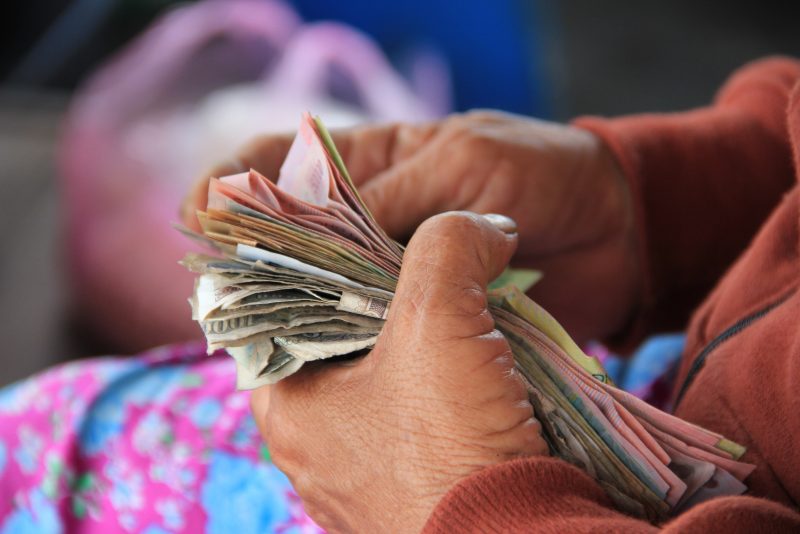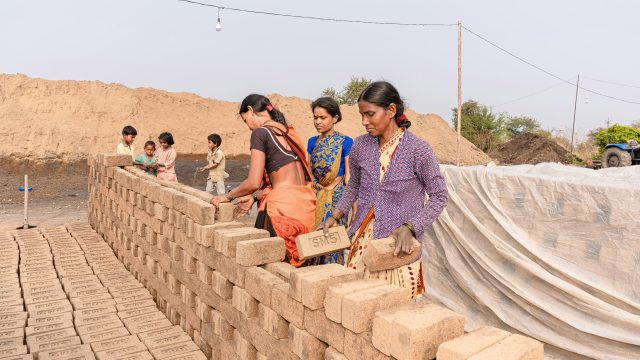How debt for climate and nature swaps can support a green recovery
A new financing tool could help emerging economies protect nature, fund climate action and strengthen their economies - all at the same time

The GEC Insights series is a new curated collection of online articles at the intersection of environment and economics, each written by leading thinkers from the worlds of business, government and civil society. Part of our Economics for Nature project, they bring together diverse perspectives to answer the question: how can we re-design our economies to protect and restore nature?
The COVID-19 pandemic continues to place unprecedented strain on health services, social welfare, and economic activity, as well as mounting fiscal pressure that continues to drive up sovereign debt levels for many countries. At the same time, attention is being diverted from critically underfunded biodiversity and climate crises.
In September 2019, IIED released a paper that explored the concept of “debt-for-climate-and-nature swaps” as a policy instrument that could support least-developed and developing countries with their rising debt burdens, whilst supporting their climate and biodiversity objectives. Since then, IIED has been engaged in discussions with a variety of actors in exploring the feasibility and viability of such an instrument. In this blog, we outline some of the key debates raised and try to provide some ways forward.
“ Another key consideration is that support can be more effective when focus is on strengthening local and national institutions rather on outcomes - for example, by channelling the swap through government systems.”
What are debt-for-climate-and-nature swaps? An existing debt contract is exchanged for a new contract, with the transaction involving some form of ‘writing down’ or ‘discounting’ on the value of the original contract. This discount may be achieved by lowering the interest rate, changing the currency of the amount owned, refinancing at a current lower market value, and / or debt forgiveness. The money saved is then invested in climate and nature activities.
Why swap debt for climate and nature objectives?
The climate and nature crises represent underlying destabilisers of economic activity, and there is a critical need to address climate resilience and environmental sustainability across all sectors and parts of society. The impacts of climate change and the destruction of nature can otherwise undermine and reverse development progress across all the Sustainable Development Goals (SDGs).
Undertaking debt for climate and nature swaps does not preclude supporting specific sectors, like health, education or other sustainable development goals. The funding from a debt for climate and nature swap should be seen as way to help shift processes, systems, and approaches rather than as the main funding stream for a specific sector.
Another key consideration is that the causes and impacts of climate change and nature destruction are global in nature; they are negative externalities that reach beyond national borders. Building on international commitments in existing climate and biodiversity conventions, upcoming negotiations for the Paris Agreement and the post-2020 Biodiversity Framework could include generic clauses supporting debt for climate and nature swaps.

A key aspect of the proposed swap structure is that the swaps should include some significant portion of debt relief. Swapping the debt for alternative activities without improving fiscal space for countries that are already facing severe budget constraints is not effective. If the country is already struggling to finance basic needs, the redirection of debt repayments would not decrease that struggle sufficiently or quickly enough to prevent debt distress or even default. Relieving some of the debt provides some alleviation in the government budget to be able to support sectors in dire need – like health and social protection in the current health crisis.
How can local and national ownership be safeguarded?
The starting point of implementing debt for climate and nature swaps is in verifying that the swap is financing national and local climate and biodiversity priorities or key performance indicators (KPIs). These could be those presented by the country through their Nationally Determined Contributions (NDCs) for climate and National Biodiversity Strategies and Action Plans (NBSAPs) for biodiversity. These KPIs could also be presented through other national development strategies as outcomes of an inclusive and participatory process. The activities selected for financing from swaps need to be chosen and designed locally, rather than being imposed by external agencies, and they should be co-developed together with the communities and citizens who will be most directly impacted.
The swaps would use these performance-based indicators to support the monitoring and accountability of the financing for the creditors, whilst ensuring local relevance by including local stakeholders into project milestones development. The financing stream of a debt for climate and nature swap may last 10 years, but the adaptation benefits may only realise their value over longer timeframes.
“ Though private sector creditors have much to gain from supporting a country’s debt sustainability, by avoiding losses from a default, they may not carry the same level of concern for a debtor country’s debt distress – short of default – as official bilateral or multilateral actors.”
Another key consideration is that support can be more effective when focus is on strengthening local and national institutions rather on outcomes - for example, by channelling the swap through government systems. Past debt swaps have often worked through INGO trust funds, which have worked for small-scale transactions and for short-term implementation. However, to now look to the large-scale, long-term social and environmental benefits of countries, arrangements that work through national systems would help build much-needed institutional capacities.
How can we engage all types of creditors?
There are two vital reasons to engage all types of creditors. First, for debt for climate and nature swaps to support large-scale financing in climate and nature activities, all eligible (long-term sovereign debt) would need to be included in the debt restructuring. Secondly, the participation in debt restructuring by only some creditors would otherwise lead to the unfair burden sharing or ‘free-riding’ of other creditors.
The incentives to engage are not straightforward for all types of creditors. Though private sector creditors have much to gain from supporting a country’s debt sustainability, by avoiding losses from a default, they may not carry the same level of concern for a debtor country’s debt distress – short of default – as official bilateral or multilateral actors. Private creditors do have commitments to their shareholders and the wider public to improve their environmental standards and activities, but often these do not translate to meaningful action at the expense of short-term profit.
The Paris Club’s clause of “comparability of treatment”, calling for debtors to hold non-Paris Club creditors to the same terms of agreement as Paris Club creditors goes some way in putting all creditors on an equal footing. Yet the private sector has largely eluded participation in debt repayment reductions so far. However, to avoid ever larger ‘haircuts’ (i.e. debt write-offs) down the line, private sector creditors will eventually have to come to the table.
China is another lesser known player, but one of particular interest as the largest single holder of bilateral debt, and with its holdings outside the formal Paris Club. With an opaque position, it is often unclear whether China will participate in collective international agreements. However, as hosts of the COP15 2021 Convention on Biodiversity (CBD), supporting nature and climate financing is higher on the agenda – presenting a vital opening for this discussion in 2021 – the super year for nature and climate.
Won’t debt restructuring affect countries’ credit ratings?
Developing countries dependent on international finance markets may feel the threat of facing lower creditor ratings as a result of participating in debt restructuring. Indeed, some countries have decided against participating in initiatives to delay debt repayments to safeguard this access to international financing markets.

However, many developing countries under debt distress are already frozen out of international debt markets. And a debt swap or restructuring deal can improve the debt sustainability of a country over time, leading in fact to better future investment conditions for international creditors. So, whilst participation may reduce ratings and access for a short while, evidence suggests the focus on debt sustainability rather than immediate access will improve such ratings for the medium and long-term and in a much shorter time than many would expect.
Conclusion: from theory to practice
Many of the objections currently raised to climate and nature debt swaps are more related to implementation than the concept itself, and the focus is now moving to this stage.
Several debtor countries have been calling for COVID economic recovery support to be aligned with climate and nature objectives, and the leaders of Pakistan, Jamaica, Namibia and Mauritania have all specifically referenced debt-for-climate-and-nature swaps. As countries begin to scope out how this innovative policy tool might best be implemented, research and expertise is needed to make sure that pilot schemes reach their full potential.
This month IIED has, under the support of the MAVA Foundation, kicked off a technical assistance programme seeking to support national actors across four countries in Coastal West Africa (Guinea-Bissau, Cabo Verde, Mauritania, and Senegal) in their scoping for undertaking debt-for-climate-and-nature swaps. Reflecting on the shortcomings of past transactions, and integrating learning from the past decade of experience in climate and nature programming, will help this new generation of swaps to support win-win outcomes for the benefit of the debtor countries and the international community.
- Paul Steele, Sejal Patel


